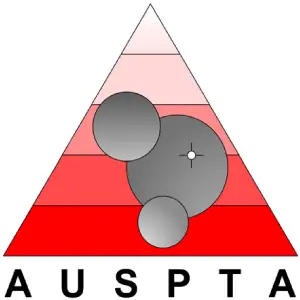Infrared Thermography Training Category 1
This course follows the recommended training requirements of ISO 18436-7 for Category I Infrared Thermography Certification. The course is also recognised by the Australian Institute of Non-Destructive Testing (AINDT). This course also aligns with the AINDT requirements and an application can also be made to the AINDT for certification at an extra cost. Jeff Erichsen is an approved examination facilitator by the AINDT and AINDT examinations are available following the course exam at an additional cost that is determined by the AINDT.
Course INFORMATION
Following the recommended training requirements of ISO 18436-7 for Category I Infrared Thermography Certification, this course ensures that participants complete it having mastered the skills necessary to not only operate their infrared system but to perform various inspections and report on their findings.
After successfully passing examination, a certificate as an Infrared Thermography Practitioner is awarded, and full certification is granted to students who successfully complete the AINDT requirements.
The hands-on workshops are limited by class size to allow for maximum interaction between the instructor and students, while the course materials include a combination of audio, visual, and kinaesthetic material to ensure that the students leave with confidence in their ability to operate their IR equipment.
This also aligns with the AINDT requirements and an application can also be made to the AINDT for certification at an extra cost. Jeff Erichsen is an approved examination facilitator by the AINDT and AINDT examinations are available following the course exam at an additional cost that is determined by the AINDT.
Course Curriculum
Introduction
- General overview of the use of Infrared Thermography
- Course logistics and curriculum outline
- Trainer and student introductions
- Understanding Certification and requirements
- Basic Infrared/Thermal Physics
The Basic Physics of Matter
- Matter – Definition and basic principles
- Energy – definition and basic principles
Heat and Temperature
- What is it and how it is measured/expressed
- Basic relation of heat temperature and energy
Heat Transfer
Conduction Fundamentals
- Fourier’s Law (concept)
- Conductivity/Resistance Basics
- Practical application of conductivity in thermography
Convection Fundamentals
- Newton’s Law of cooling
- Practical application of convection in thermography
Radiation Fundamentals
- The Electromagnetic Spectrum
- Plank’s Law
- Wien’s Law
- Stephan Boltzmann Law
Radiosity Concepts
- Reflection, Transmission, Emission
- Radiometry and Imaging
- Spatial Resolution Concepts
Infrared Equipment Operation
- How your infrared imager works
- Equipment overview/features
- Operation of equipment: controls and lenses
- Getting a good image: Clarity (focus), Thermal Focus, Dynamic Range
- Recognizing and Dealing with Reflections
- Recognizing and Dealing with Convection
Temperature Measurement
- Measurement functions
- Performing accurate temperature measurement
- Performing emissivity measurements
Avoiding errors
- Spot size
- Distance
- Atmospheric Attenuation
Environment and Support Equipment
Environmental Data
Support Equipment for Infrared Inspections
Applications
- Qualitative vs Quantitative Inspections
- Electrical Inspections
- Mechanical Inspections – Friction
- Thermal Resistance – insulation & refractory
- Thermal Capacitance – roof moisture surveys
- Physical State – Gas/Liquid, Liquid/Solid
- Building Inspections
- Process Inspections: Fluid Flow, Steam, and Vessel levels
- Energy Related Inspections: Solar Panels and Cold Rooms
Reports/Software
- Introduction
- Software programs
- Generating Reports
- Making Templates
- Image Analysis



